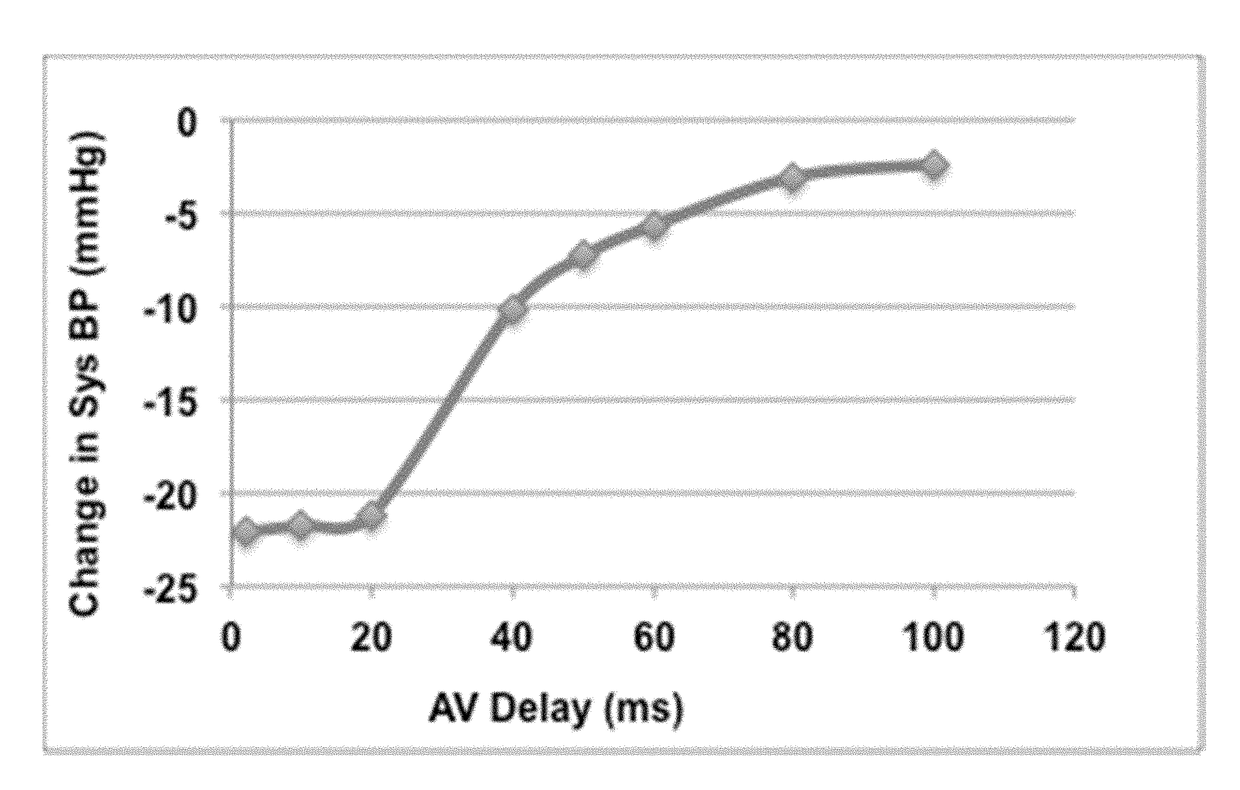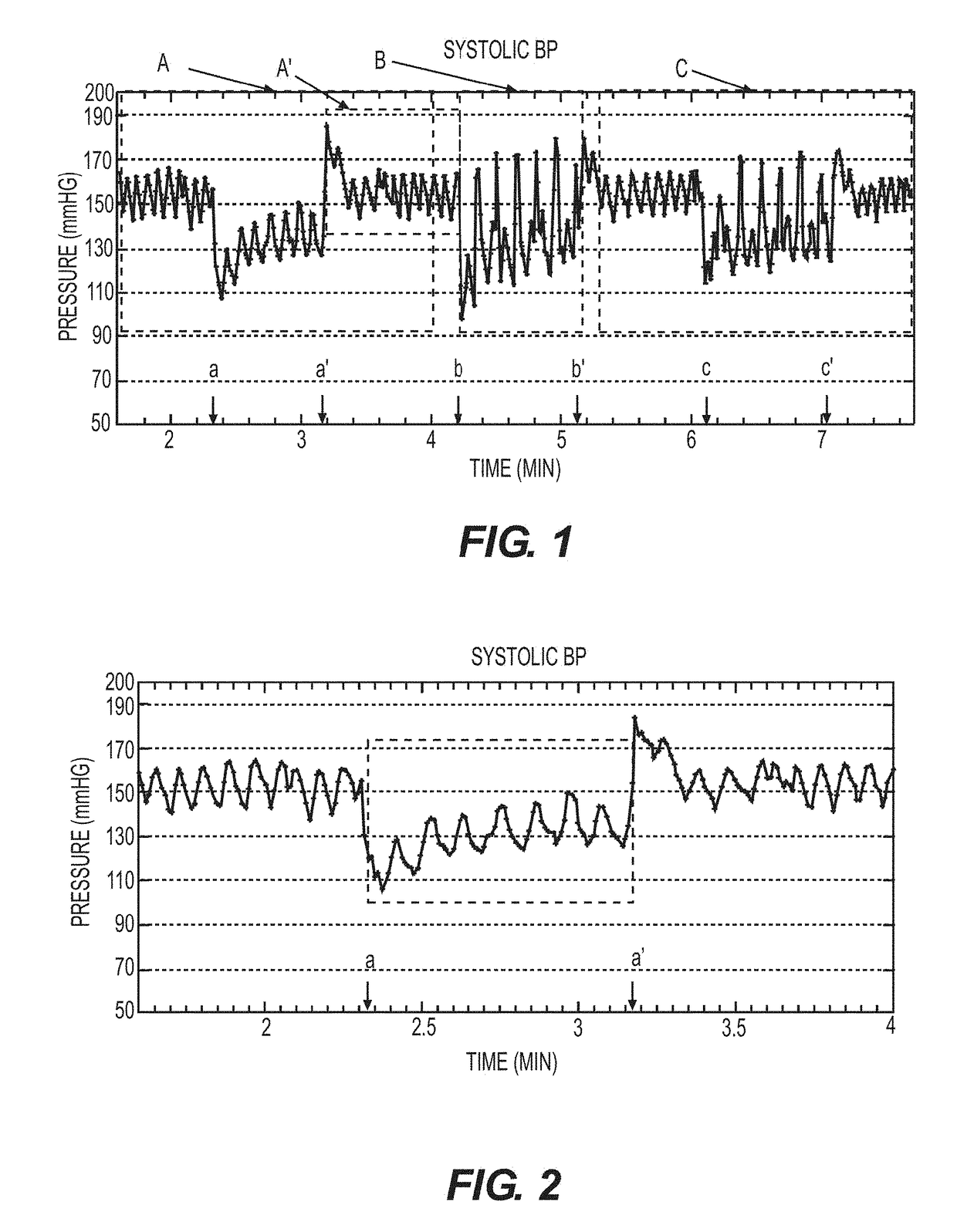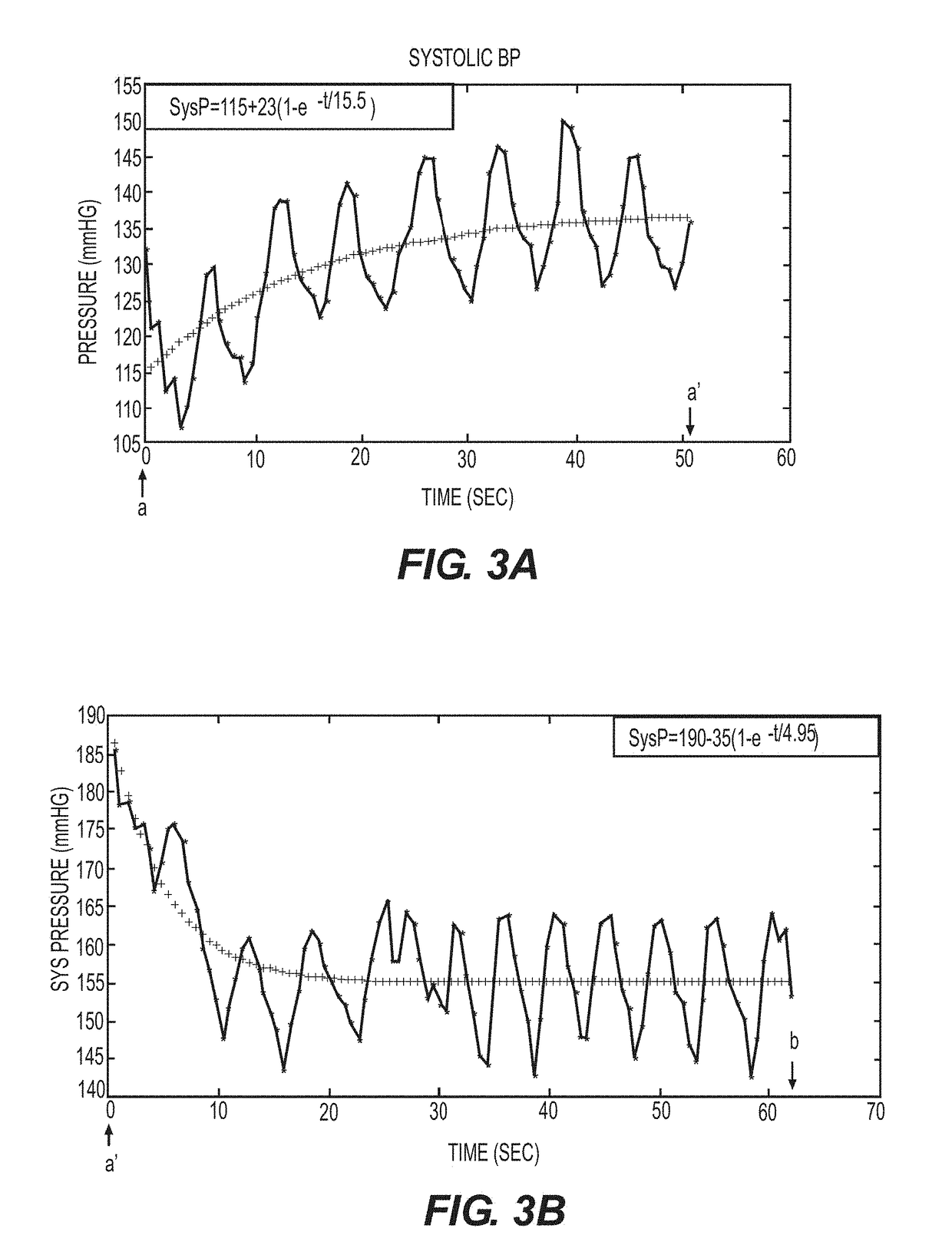Methods and Systems for Controlling Blood Pressure
a technology of blood pressure and blood pressure control, applied in the field of hypertension treatment, can solve problems such as stroke, heart attack, stroke, etc., and achieve the effects of reducing or preventing atrial kick, and reducing the volume of ventricular filling
- Summary
- Abstract
- Description
- Claims
- Application Information
AI Technical Summary
Benefits of technology
Problems solved by technology
Method used
Image
Examples
example 1
[0379]FIG. 21 shows the systolic BP of an untreated patient during a 24-hour period of monitoring. An hourly average is presented. As shown, the patient's BP was abnormally high only during the day (circa 10 a.m. to 6 p.m.). In such types of cases, it may be preferred to set a device to deliver pulses configured to reduce atrial kick and / or to provide AC stimulation only during the time of day when BP is expected to be abnormally high (i.e., when there is a need or where a need is expected).
example 2
[0380]Another example is shown in FIG. 22. Here a patient's untreated blood pressure (represented in FIG. 22 by the line with “x” data points) was shown to be abnormally high during the night (after 2 p.m. and before 7 a.m.). An increase in BP during the day was within normal range and may be attributed to an increase in patient activity. Optionally, it may be assumed that this patient would be in need of treatment only during the night, and a device may be set to deliver stimulation accordingly. Optionally it may be assumed that the patient does not need treatment during the day, and a device may be set such that even if an increase in blood pressure is measured during the day, such increase should not elicit the delivery of treatment to reduce blood pressure. Optionally, the device may be set not to measure blood pressure during the day.
[0381]In the example shown in FIG. 22, the patient was then treated with a blood pressure reducing pulse having the following setting: pacing both...
example 3
[0388]FIG. 25 is a graph of systolic blood pressure taken over a 24-hour period for a particular ambulatory patient. As shown, the patient of FIG. 25 has very high blood pressure during the beginning of the day (approximately 140-160 mmHg between about 6 a.m. and about 2 p.m.) and very low blood pressure during the late parts of the night (under 100 mmHg between about midnight and about 2 a.m.), with intermediate blood pressure values in the interim (approximately 120-140 mmHg from about 3 p.m. to about 11 p.m.).
[0389]For the type of patient of FIG. 25, it may be useful to apply therapy with different sets of stimulation parameters throughout the day. For example, in one implementation, a first set of stimulation parameters that significantly reduce blood pressure may be applied between about 6 a.m. and about 2 p.m. (with a relatively very short AV delay), a second set of stimulation parameters that provide a longer AV delay, but still somewhat reduce blood pressure, may be applied ...
PUM
 Login to View More
Login to View More Abstract
Description
Claims
Application Information
 Login to View More
Login to View More - R&D
- Intellectual Property
- Life Sciences
- Materials
- Tech Scout
- Unparalleled Data Quality
- Higher Quality Content
- 60% Fewer Hallucinations
Browse by: Latest US Patents, China's latest patents, Technical Efficacy Thesaurus, Application Domain, Technology Topic, Popular Technical Reports.
© 2025 PatSnap. All rights reserved.Legal|Privacy policy|Modern Slavery Act Transparency Statement|Sitemap|About US| Contact US: help@patsnap.com



